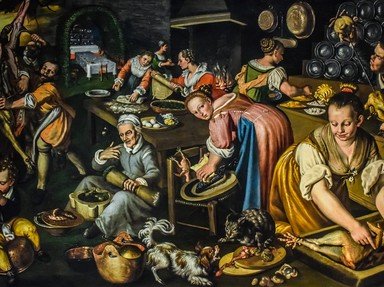Quiz Answer Key and Fun Facts
1. "Expulsion from the Garden of Eden", fresco in the Brancacci Chapel, 1425
2. Dome of Santa Maria del Fiori, 1436
3. "Sir John Hawkwood", fresco in Florence Cathedral, 1436
4. "David", bronze statue in the Bargello Museum, circa 1440
5. "Life of Christ", a series of frescos in the Friary and Convent of San Marco, 1445
6. "The Doors of Paradise", east doors of the Baptistry of St. John, 1452
7. "Journey of the Magi", fresco in the Medici-Riccardi Chapel (also known as the Magi Chapel), 1459
8. "The Annunciation", painting in the Uffizi, 1472
9. "Primavera", painting in the Uffizi, 1480
10. "David", marble statue in the Galleria dell'Accademia, 1504
Source: Author
Southendboy
This quiz was reviewed by FunTrivia editor
ponycargirl before going online.
Any errors found in FunTrivia content are routinely corrected through our feedback system.
